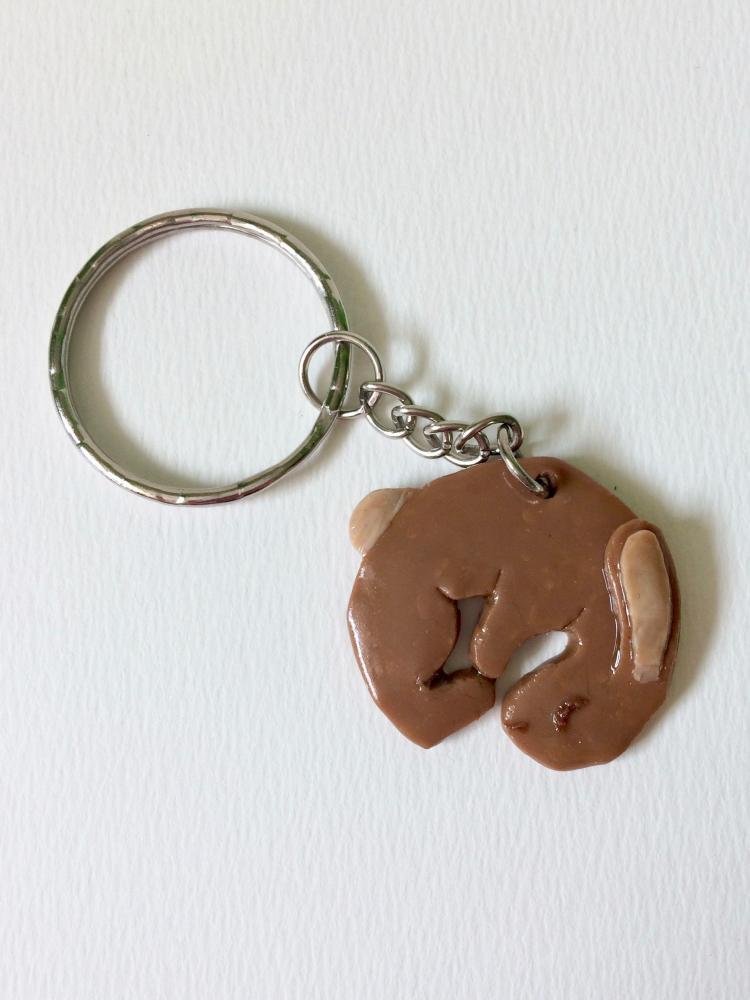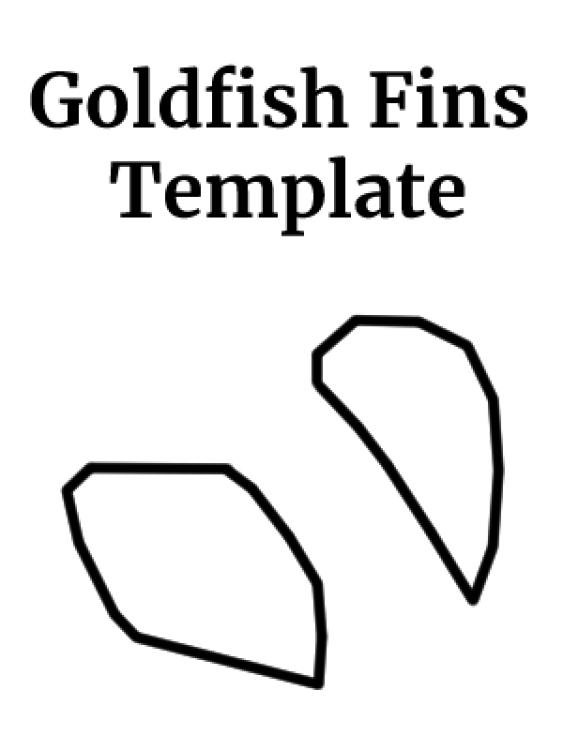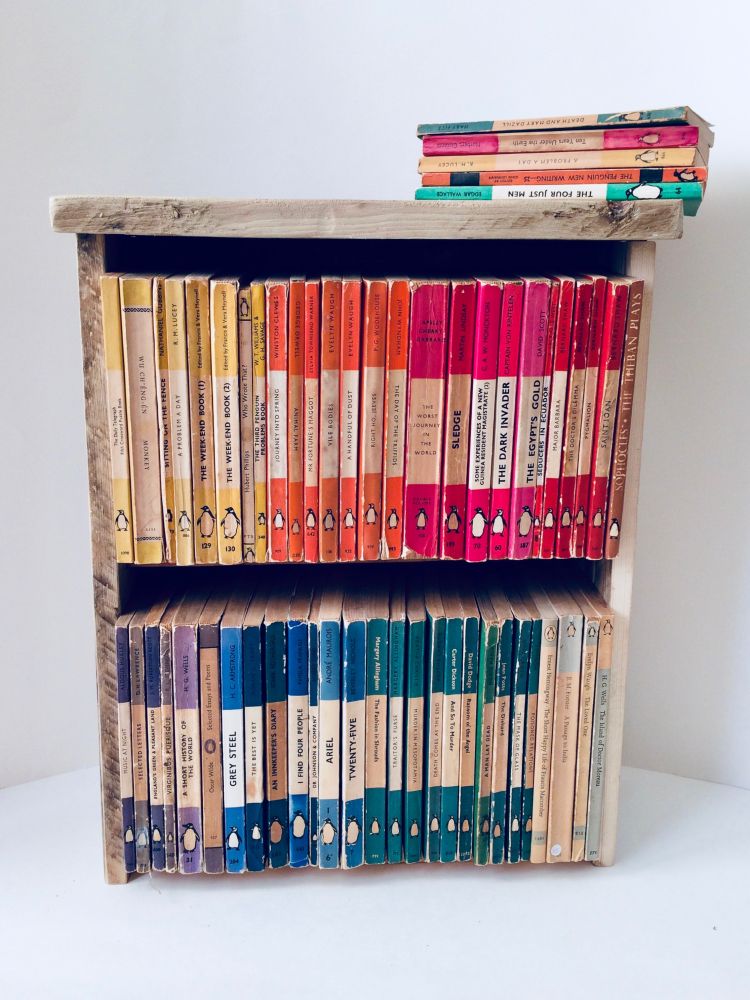These cute keyrings, are just so adorable you’ll be showing them to everyone. Quick, easy and fun to make your family and friends will soon be asking you for one.
Materials:
- Keyrings
- Polymer clay
Tools:
- Rolling pin
- Pliers
- Paper
- Pencil
- Kraft knife
- Pin
- Polyurethane gloss varnish
DINO KEYRING:

- Select two different shades of green, one being much lighter than the other.
- Taking the darker of the two clays – which will form the body – roll to a depth of just a few millimetres.
- Using the template of the dino body; carve around the outline to form the body.
- Next, take a very small amount of white clay and roll this into a ball (this will be for the eye). Do the same with the black clay, but only half the amount, for this will be the pupil. Place the black ball in the centre of the white ball, and then place this on the dino’s head for the eye.
- Going back to the earlier light green clay, cut off several very small amounts of it, and roll these into tiny balls – this will be for the dino’s spots. Place these along the top-back of the dino’s body and press down lightly.
- Make a small hole in the dinosaur’s centre-back. The hole should be slightly bigger than the keyring’s wire.
- Place the completed dino (minus the keyring) onto the baking parchment/tin foil and follow the clay’s baking instructions (it differs per brand). As it’s quite thin, follow the shorter time frame. It will be reasonably bendable but don’t worry.
- Once cool, sand-down the backing and edges till smooth.
- Apply 1-2 layers of gloss varnish – leave to completely dry in between (normally 8-12 hours).
- Using pliers, pull open the bottom loop of the keyring and thread its wire through the hole you made earlier (step 6). Use the pliers to close the loop and done!

BUNNY KEYRING:



- Select a medium brown for the bunny’s body – roll this out to a depth of just a few millimetres. Taking the template for the bunny’s body; cut out its body, and using the same clay, cut out the bunny’s outer ear – use the ‘ear and tail’ template to help. Put these aside for now.
- Taking a small piece of pink clay, roll it to the same depth as the bunny’s body. Then, using the ear and tail template, cut out the tail and inner ear from the pink clay. Following this, place the inner ear inside the outer ear.
- Using the final image as a guide, place the ear and tail onto the bunny. Smooth the base of the ear flat, and additionally smooth the edges of the tail so they join the bunny’s body.
- Next, cut off a very small amount of dark brown clay and roll this into a tiny thin line. Cut off the tip of the line to form the mouth, and curve the remaining line to be the bunny’s eye.
- Using the dashed lines as a guide on the bunny’s engraving template, lightly engrave these lines on the clay body, but don’t cut through.
- Taking a pin, make a small hole in the bunny’s centre-back, wiggle the pin around till you have a hole slightly bigger than the keyring’s wire.
- Place the completed bunny (minus the keyring) onto baking parchment/tin foil and follow the clay’s baking instructions (it differs per brand). As it’s quite thin – follow the shorter time frame. It will be reasonably bendable, but don’t worry.
- Once cool, sand-down the backing and edges till smooth.
- Apply 1-2 layers of gloss varnish – leave to completely dry in between (normally 8-12 hours)
- Using pliers, pull open the bottom loop of the keyring and thread this through the clay hole you made earlier (step 6). Use the pliers to close the loop and done!

GOLDFISH KEYRING:


- Cut and roll out some white clay to a depth of just a few millimetres.
- Next, cut out a much smaller amount of orange and break this up into several small pieces of clay. Scatter the orange clay across the white. Then, roll across the surface to push the two together.
- Following this, fold the clay into a tight “ball” before rolling back flat to a few millimetres – this will cause the edges of the orange to blend into the white. (Don’t overly roll and fold, roll and fold – for it will eventually blend all the colours together.)
- Taking the template for the goldfish’s body – cut out the fish’s outline.
- After this cut out a very small amount of black, and roll it into two smaller balls – these will be the eyes – place one on either side of the fish’s head. Use the final image as a guide.
- Next, roll out some plain white clay to a depth of just a few millimetres, and using the fins template, cut out the fins and attach them to the side of the fish. Use the final image as a guide.
- Very slightly mark fine lines onto the tail and fins. Make sure the lines point away from the head.
- Taking a pin, make a hole on the fish’s back for the keyring, make sure it’s slightly bigger than the keyring’s wire.
- Place the completed goldfish (minus the keyring) onto baking parchment/tin foil and follow the clay’s baking instructions (it differs per brand). As it’s quite thin – follow the shorter time frame. It will be reasonably bendable as it cools, but don’t worry.
- Once cool, sand-down the backing and edges till smooth.
- Apply 1-2 layers of gloss varnish – leave to completely dry in between (normally 8-12 hours).
- Using pliers, pull open the bottom loop of the keyring and thread this through the hole you made earlier (step 8). Use the pliers to close the loop and done!












